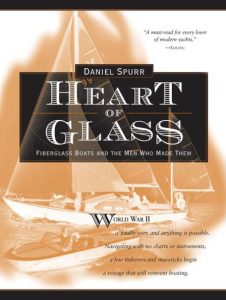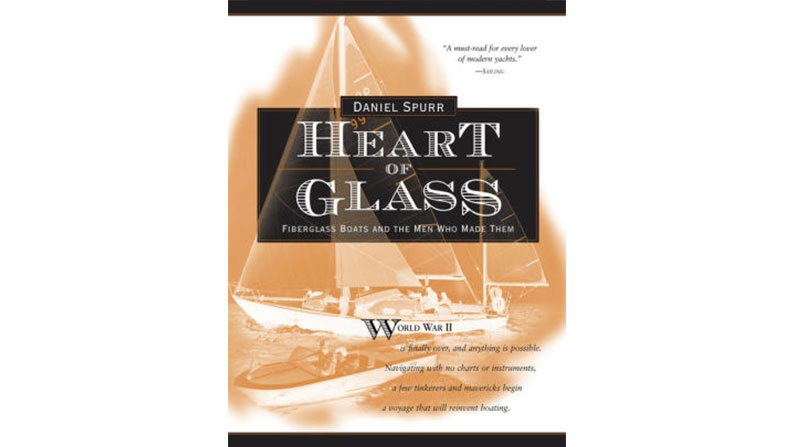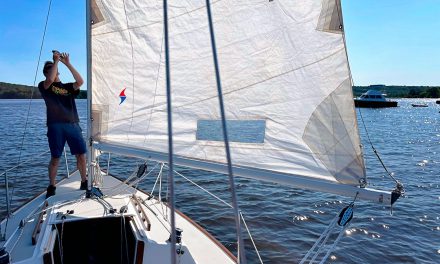 This book, aptly subtitled, “Fiberglass Boats and the Men Who Made Them,” is the bible of the fiberglass boatbuilding industry. And Dan Spurr is the prophet to write it. Dan is Good Old Boat magazine’s boat review editor. He’s written about boats for 45 years. He’s served as an editor for Cruising World, Practical Sailor, and Professional BoatBuilder magazines. He is the author of seven books, which include Spurr’s Boatbook: Upgrading the Cruising Sailboat, Yacht Style, and Offshore Sailing, co-authored with Bill Seifert.
This book, aptly subtitled, “Fiberglass Boats and the Men Who Made Them,” is the bible of the fiberglass boatbuilding industry. And Dan Spurr is the prophet to write it. Dan is Good Old Boat magazine’s boat review editor. He’s written about boats for 45 years. He’s served as an editor for Cruising World, Practical Sailor, and Professional BoatBuilder magazines. He is the author of seven books, which include Spurr’s Boatbook: Upgrading the Cruising Sailboat, Yacht Style, and Offshore Sailing, co-authored with Bill Seifert.
But for all the information it contains, Heart of Glass is not a dry, academic, historical treatise. No, this text is filled with, dare I say, heart.
Dan sees boatbuilding as a human story and Heart of Glass is filled with tales of builders, their companies, their boats, their influence. Dan labored 11 years to dig up all the little bits and pieces of obscure knowledge he’s woven into this tale (it’s not the stuff you can look up on Wikipedia). And given the fact that boatbuilders in general are not much for record-keeping (to this day), the extent of Dan’s historical research into nearly all the significant builders is nothing short of amazing. Take the story of Ray Greene.
Ray was a founding father of fiberglass boatbuilding, starting with the 16-foot Rebel sailboat in 1947. Like most, Ray discovered that boatbuilding is not an easy path to wealth. “…There were setbacks, as well: the 1950 fire that burned his Byrne Road plant to the ground, and a 1965 fire that burned one boat and caused $8,000 in damages. In 1952, he and his wife, Joanne, unsuccessfully challenged the Ohio Turnpike Commission’s plan to construct bridges that would isolate sailboats at his Maumee River facility from open water. Eleven years later, burglars looted his business.”
Stories similar to Greene’s abound. Spurr accounts for the very beginnings of “plastic” boatbuilding in great detail. Born of World War II military needs, the resins and reinforcements needed to make everything from airplane wings to electrical components were accelerated. The book chronicles it all, right up to modern times.
Heart of Glass is richly filled with photographs and drawings, nearly to the point of distraction. In them, one can see boatbuilding evolve over the decades.
As a boat reviewer, I have used Heart of Glass as a reference source for years when researching boat reviews. There are two appendixes: 1. Milestones in Chemistry, Fiberglass, and Composite Boatbuilding—significant historic points in time from 1820 to 1996 and 2. Selected Company Profiles; Aero-Marine to Yamaha Motor Corp, in 152 brief biographies. Some are discussed in the body of the work, others not, and a few refer you to another company name. Spurr includes extensive notes on each chapter as well as thorough an index. Because of this, I skipped around a lot, reading what I needed or what caught my eye. Only recently did I become determined to read Heart of Glass from beginning to end. While it was slow-going through the technical sections, and I was overwhelmed by the quantity of names I had to process, I learned a lot, and realize I should have read it through long ago. Spurr has done a great job of making a readable book out of a lot of history and information.
Heart of Glass, by Daniel Spurr (International Marine/McGraw-Hill, 2004)





